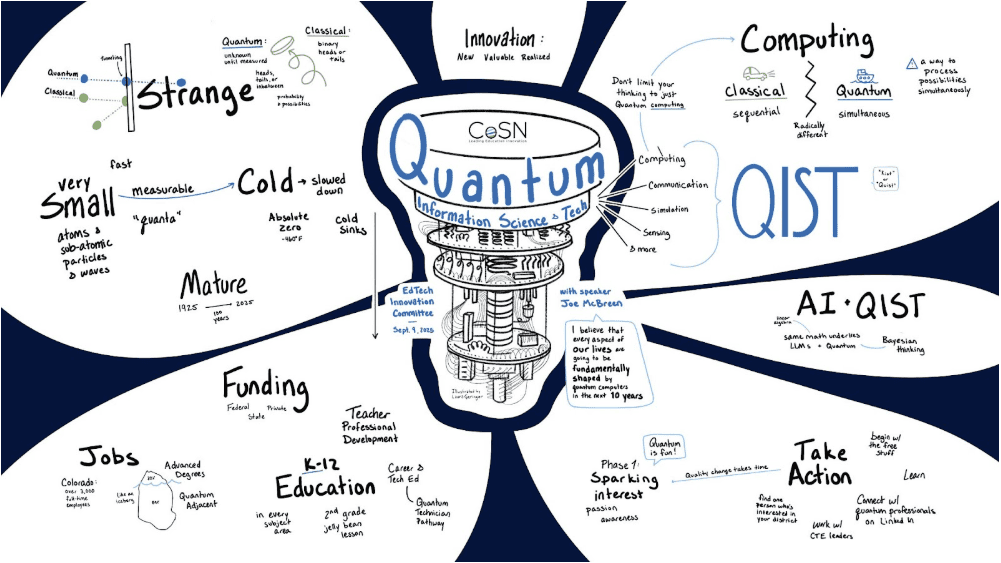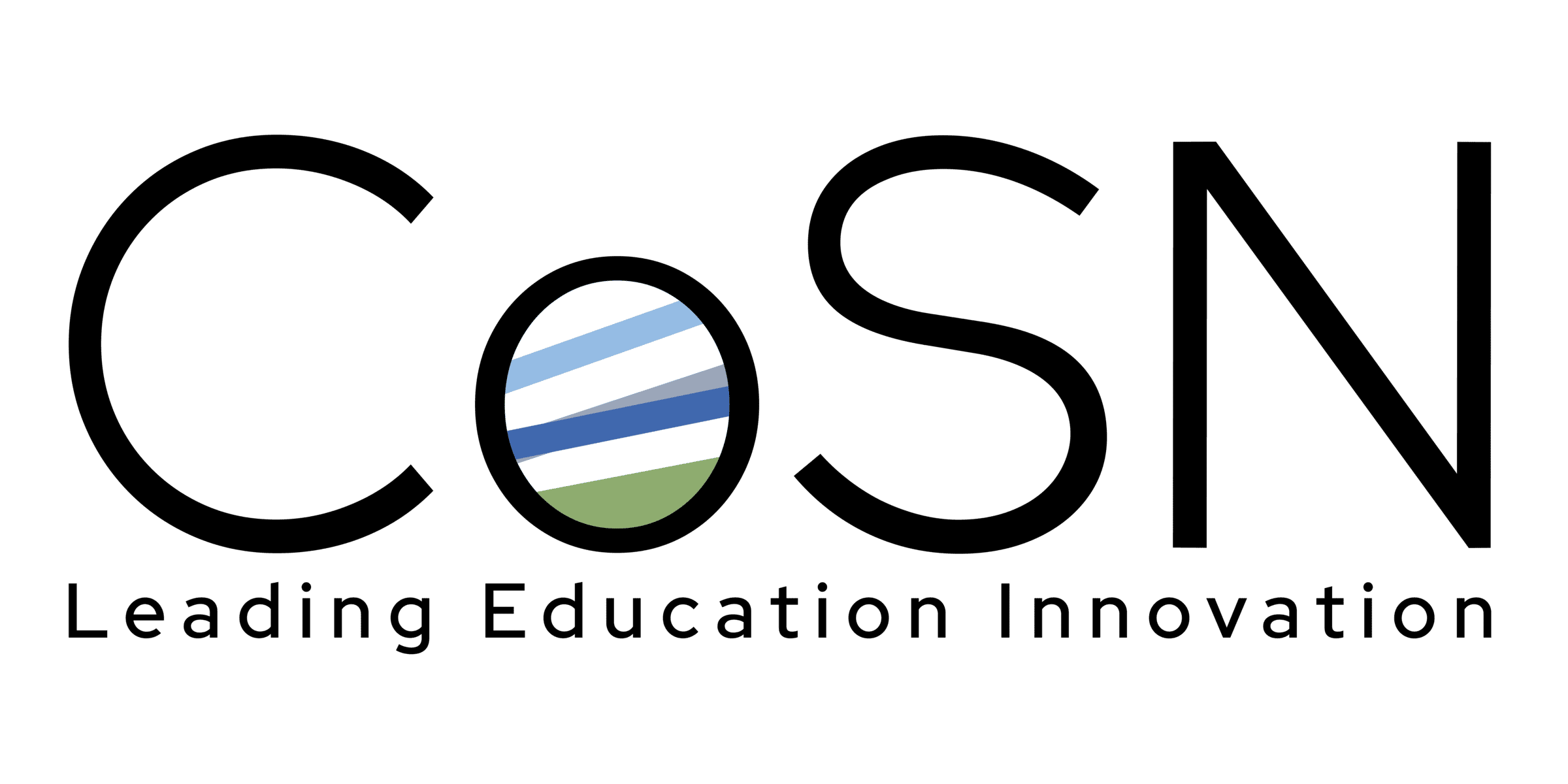At a recent EdTech Innovation Committee meeting, members heard from Joe McBreen, Assistant Superintendent of Innovation at St. Vrain Valley Schools in Colorado, on the fast-emerging field of quantum information science and technology (QIST). The conversation highlighted why this is a moment of opportunity for education leaders and why preparing students and teachers for a quantum future matters.
“This is an amazing time to be an EdTech leader, and I’m really excited for the future,” McBreen said.
Defining Quantum
Quantum operates at the atomic and sub-atomic level, where particles behave in ways that differ from classical physics. Phenomena, such as superposition and quantum tunneling, illustrate how particles can exist in multiple states or even pass through barriers. Because these particles are so small and bizarre, working with them requires extreme conditions – like super-cold environments – and makes quantum useful for unique applications.

Graphic recording mapping key ideas from the conversation (Laura Geringer, PumpkinBerry Consulting)
Why It Matters
While IT directors will probably not be upgrading their server racks with quantum computers very soon, quantum is more than computing. QIST encompasses computing, communications, simulation, and more. The field has existed for 100 years, but investment and workforce demand are accelerating rapidly now. Colorado, where McBreen is located, has attracted more than $1 billion in private equity, with thousands of QIST-related jobs. Additionally, the majority of opportunities (about 80%) are expected to be “quantum-adjacent” roles in technical and skilled trades, with the remainder requiring advanced degrees.
“I believe that every aspect of our lives is going to be fundamentally shaped by quantum computers in the next 10 years,” McBreen shared.
Education and Workforce Preparation
Quantum is already entering K-12 education. McBreen shared that in Colorado, they have launched an introductory high school course and introduced quantum concepts to 2nd graders using jelly beans and cookie crumbs. Career and Technical Education leaders are also piloting a quantum technician pathway. Professional development for educators is essential to make sure that they have the tools needed to integrate quantum concepts across subjects like math, science, and storytelling.
Looking Ahead
Quantum is a “game changer” with the potential to reshape multiple sectors of society. For education leaders, McBreen said it’s important for us to build QIST awareness, prepare teachers, and connect with industry partners. As with any innovation, the challenge is less about speed and more about setting the right direction — laying the groundwork for students to thrive in a quantum future.
Additional Resources
Interested in exploring quantum further? Here are a few resources shared during this EdTech Innovation Committee meeting on quantum.
- Colorado Department of Education: Quantum in K-12 Education
- National Science & Technology Council: Quantum Information Science and Technology Workforce Development National Strategic Plan (February 2022)
- Elevate Quantum
- CTE Secondary Pathways with Quantum Adjacent Courses
- National Q-12 Education Partnership: What you can do with quantum science
CoSN’s EdTech Innovation Committee meets virtually every month to develop resources on CoSN’s Driving K-12 Innovation Top Topics and other timely trends that have the potential to significantly impact K-12 education.
AUTHOR: Stephanie King, Writer and Communications Manager,
CoSN’s EdTech Innovations Committee and Driving K-12 Innovation
Published on October 22, 2025
CoSN is vendor neutral and does not endorse products or services. Any mention of a specific solution is for contextual purposes.

